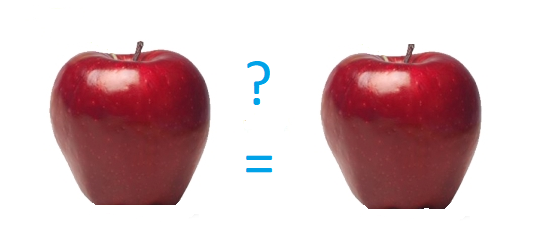Comparing “Apples with Apples” in an Explosives Tender Process

Tender processes can be difficult for many reasons. They test internal communication within supplier and customer teams and they can reveal how (un-)aligned different areas of a company are technically, commercially and sometimes strategically …and all of this comes in addition to the interactions between a mining company and numerous potential explosives suppliers in a marketplace where both regional and global considerations are important. Add to that the complications of density, powder factor, energy levels and service levels (just to name a few) and the tender process that was conceived to extend a contract or reduce pricing just became really complicated.
Despite the efforts of some mining companies to simplify and standardize the inputs, at the end of the day the team in charge of the tender must deal with a huge amount of information provided by suppliers that, far from making decisions simple, often complicates them. Frequently, suppliers are asked to fill in spreadsheets with products, prices and labour to match the existing scope of work for explosives supply. The wealth of information provided can often obscure some of the subtle yet important aspects of a proposal, particularly when “conforming” tenders are required to simplify the analysis, and help compare “apples with apples”. In an effort to try and obtain additional value, we often see “non-conforming” tender proposals from suppliers but the evaluation of these can be difficult, particularly when the process requires a financial analysis to be completed.
For instance, how do we compare bulk products? Is it by density, RBS, RWS, total energy or is it to do with their physical characteristics or the suppliers claimed VoD data? And what does all of that mean in dollars and cents? Of course, a lot depends on the specific mine, the outcome you are looking for and the application the products are going to be used in. The evaluation team need to consider fume, sleep time, wet holes vs dry, hole depth, reactive ground, new technology and then work through the quantity of product needed to do the required work. Typically, this needs to be done for 4 or 5 tender responses and don’t forget that all suppliers will have slightly different bulk products (and sometimes several options), and there most likely will not be an exact match for the existing product being used!
With all this complexity, we can see, the comparison becomes a real headache. So how do we compare apples with apples in a tender process?
The approach needed requires that the technical evaluation is conducted hand in hand with the financial modelling and that, wherever possible, the technical differences and value adding opportunities are considered and compared in a quantitative manner.
For example, take the time to understand how much of each supplier’s product is needed to do the same job as well as any changes in efficiencies that mean resources might vary. Check that proposed product matches are realistic and won’t lead to (higher cost) replacements being needed and work through how the product mix may change over time.
For sure there will still be some aspects that can’t be modelled accurately in a spreadsheet, but these still need to be handled objectively and it might mean certain suppliers cannot be considered if their products could not eliminate fume or were not suitable for wet holes.
It’s also critical to fully evaluate the impact of the rise and fall formula over the life of the contract and not rely upon a point in time comparison or the last 2 or 3 historical price points. Such an approach has the potential to lead to the wrong decision being made. Make sure there is a good appreciation for which factors will impact pricing most over time and the importance of these to the business.
Lastly, take care to minimize the impact of bias in any evaluation. A single good or bad experience can shape perceptions, as can the daily interactions with an incumbent supplier. Consider how suppliers are performing elsewhere in the market with similar mines and think through the impact on the supplier’s business if they win (or lose) the tender.
Explosives supply contracts can have a big impact on the financial position of a business but also on the daily operation of the mine. This is because they are generally high value, longer-term arrangements but also because they can have a significant impact on the broader operations at a mine. Choosing the best supplier available form a financial, risk mitigation and technical perspective, helps ensure the achievement of the company goals and an overall improvement in the net financial position of the company.
At Moncourt Group we understand how the use of explosives impacts mining, where suppliers aim to provide value and the detailed market dynamics. We combine this with advanced financial modelling capabilities and contracting experience to provide our customers with high levels of insight to support them in making the hard decisions in an explosives tender processes to ensure their ongoing success.
© Copyright 2024 Moncourt Group Pte. Ltd. UEN: 201501793G All rights reserved. Legal Privacy Policy


